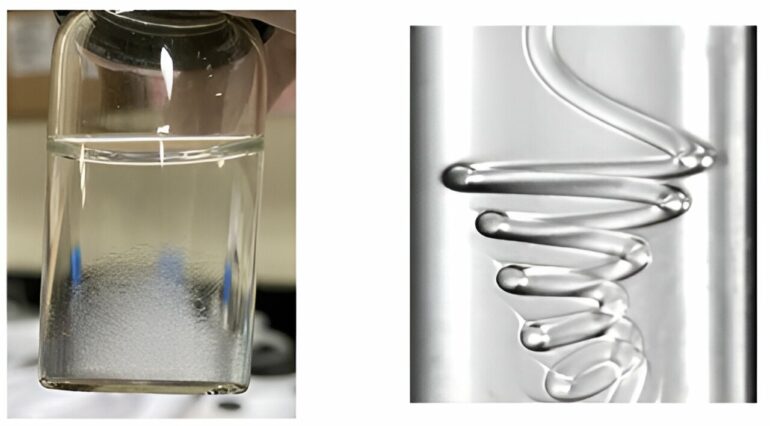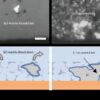An Engineering team at the University of Hong Kong (HKU) has developed a novel microfluidic technique capable of greatly enhancing applications in materials science and biomedical engineering.
By utilizing the phenomenon of “rope coiling” within microfluidic channels, the innovative technique offers a promising solution for assessing the flexibility of elastic microfibers at high throughput. It can effectively measure the elastic moduli, which are determinants of mechanical performance in cell growth, DNA replication, artificial muscle designs of biomimetic robots, and more, of microfibers.
These microfibers are key components in various high-tech and medical products and biological structures, such as cytoskeleton, spider silk, and optical fibers.
The new microfluidic technique was developed by Professor Anderson H. C. Shum and Dr. Yuan Liu from the Department of Mechanical Engineering at HKU, in collaboration with Professor Howard A. Stone and Dr. Janine K. Nunes, scientists from Princeton University, and Dr. Jack H. Y. Lo from King Fahd University of Petroleum and Minerals.
The findings have been published in the Proceedings of the National Academy of Sciences, titled “High-throughput measurement of elastic moduli of microfibers by rope coiling.”
The new approach eliminates the need for manual sample handling by utilizing a quantitative correlation between elastic moduli and coiling radius. This enables the measurement of 3,300 fibers per hour, marking a substantial improvement over existing methods and providing a thousandfold increase compared to using a typical tensile tester.
The breakthrough significantly reduces the time-consuming and skill-intensive process of sample loading and unloading, which is particularly beneficial for tiny, fragile samples, such as filamentous bacteria, actin filaments, DNA, carbon nanotubes, and functional microfibers.
“Our approach not only simplifies the testing process but also integrates the manufacturing and testing phases,” said Professor Shum.
“With the inline measurement capabilities, which couple the ‘making of microfibers’ and the ‘measurement of elastic modulus’ on the same process line, we can now measure the elastic modulus of every fiber immediately after production. This enables the immediate identification and correction of defects by adjusting process variables, such as UV intensity, in real-time.
“For instance, to maintain a constant modulus, a decrease in coiling radius downstream would trigger an increase in UV intensity upstream, serving as feedback mechanism to correct production faults. On the other hand, elastic moduli can also be controlled by the intensities of UV light, ensuring consistent product quality,” Professor Shum added.
Additionally, the method is non-destructive, eliminating the need to bond fiber ends to fixtures, as required in conventional tensile tests. This feature is especially advantageous when dealing with fibers that exhibit nonuniform elastic moduli, which traditionally require segmentation into multiple parts for individual assessment.
Looking forward, the team is optimistic about adapting this method for even smaller fibers, including those with submicron diameters such as DNA and actin filaments.
“Adjusting the microfluidic setup and fluid dynamics to accommodate smaller fibers present some technical challenges, but it is definitely feasible,” said Dr. Liu.
More information:
Yuan Liu et al, High-throughput measurement of elastic moduli of microfibers by rope coiling, Proceedings of the National Academy of Sciences (2024). DOI: 10.1073/pnas.2303679121
Provided by
The University of Hong Kong
Citation:
New microfluidic technique to measure elastic modulus of microfiber for wide biomedical engineering applications (2024, May 27)



